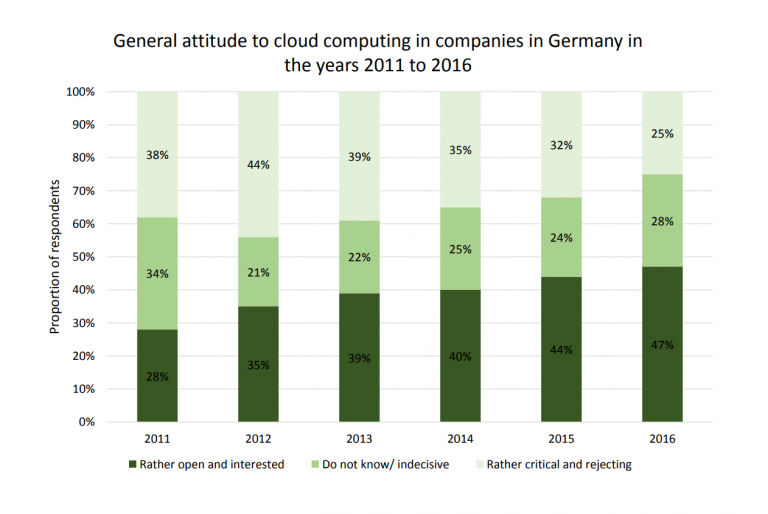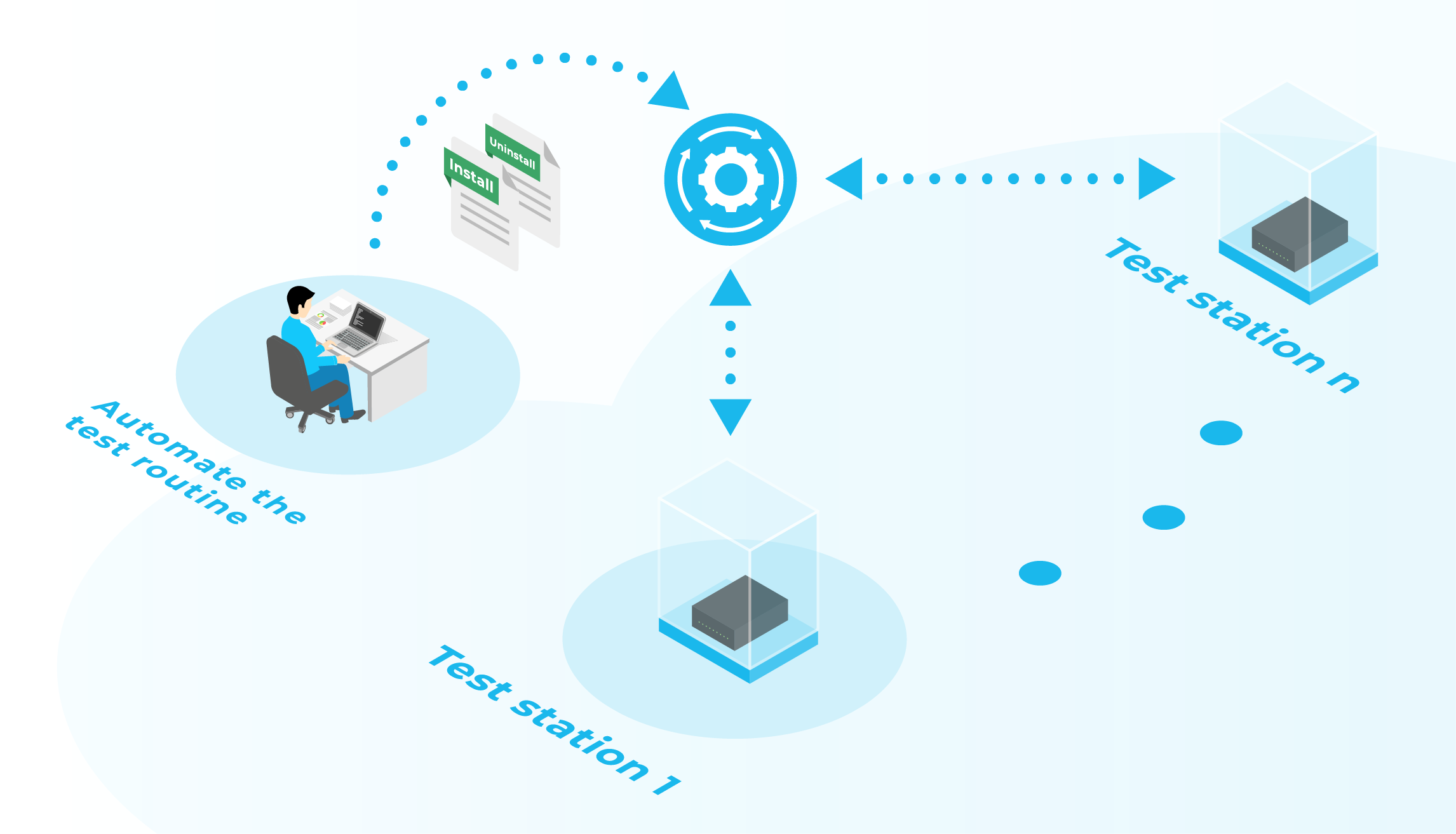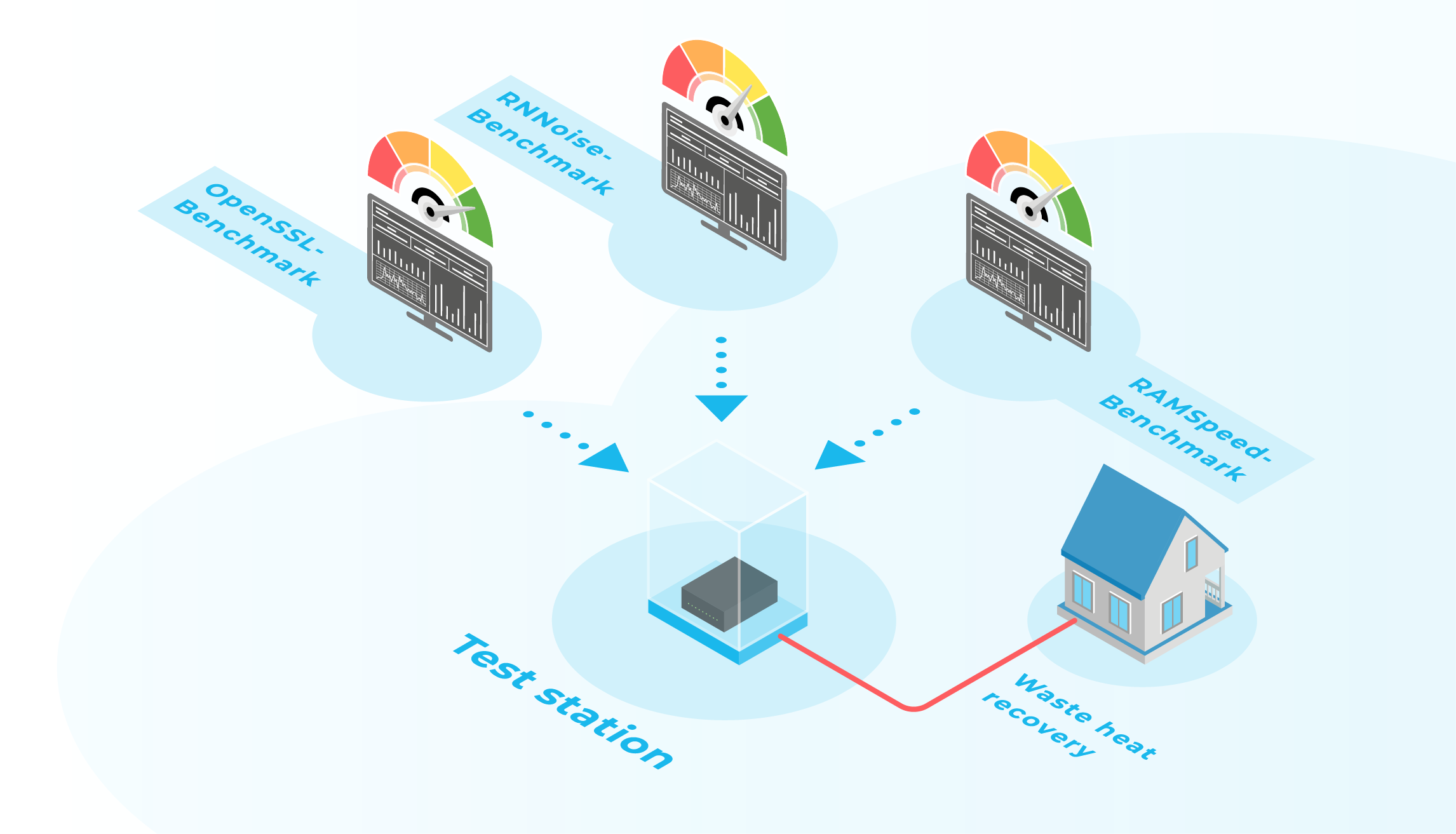Deciding between hosting in a cloud and setting up your own IT infrastructure equals the decision of whether to buy your own car or to travel by taxi. Cloud computing is like taxi driving. You can order as many cars as you need (scalability), get out or change the route spontaneously (flexibility). Additionally, you pay only for the ride that has actually been taken (Pay-Per-Use). If you have your own car, you will have a considerable amount of running costs for insurance, fuel, taxes, and maintenance. In return, each journey can be individually defined and carried out on your own responsibility. If the car is broken, you can react immediately whether yourself as a garage tinker or in a specialist workshop.
But back to infrastructure: The trend is towards outsourcing IT services to save costs for the management and maintenance of the IT infrastructure. Since 2009, spendings on cloud computing have grown 4.5 times as fast as payments for own IT. In the meantime, the cloud represents a proud 39.2 percent of all infrastructure spending.
Down into the cloud
Due to increasing storage requirements, usability, automation, and the desire for maximum resource access and flexibility, spendings on cloud computing have grown exponentially during the last years. Especially for young companies with strong web or on-demand affinity as well as an initially low budget, a public cloud solution presents itself to keep investments as low as possible. To be able to react flexibly to unforeseen growth or unanticipated setbacks, it is usually not worth for start-ups to invest in a complex and expensive IT infrastructure. Even small and medium-sized enterprises often dependent on external IT expertise, and are therefore predestined for cloud services. They can rely on a stable and secure IT operation without recruiting their own specialists. They also have the opportunity to expand their resources in the short term without great effort. Large enterprises and research facilities whose IT systems need to be able to reach the petabyte or exabyte levels by the connection of databases, sensor networks or the intranet are offered by cloud services to meet short-term additional requirements.
In the so-called public cloud, many customers share a common virtualized infrastructure, which means that the servers can be fully utilized. The typical pricing model for cloud computing is “pay for what you use,” allowing companies to buy more (or less) computing power as their needs change. This way companies obtain high availability and redundancy with minimal maintenance and cost.
All in one the public cloud is not completely superior to an IT infrastructure. Security in the cloud is still felt to be critical. After all, 53 percent of all German companies still have reservations about cloud solutions.
As a service provider, companies ultimately have to rely on the provider to handle the data with the necessary prudence. Above all in the USA, providers are subject to low data protection conditions, which is a major security risk. The choice of the provider should therefore be well considered.
Internal IT as a familiar terrain
Instead of venturing into the cloud, companies have the option to build their own IT infrastructure. In case of unforeseen problems, necessary security measures, or if the infrastructure is subject to short-term change requirements, the company’s own staff can react more quickly, since there is no need for coordination with an external service provider. However, since the calculation of maintenance, support and the need for resources is difficult, high operating costs result. Preliminary costs such as investment capital and licenses may not be neglected. These expenditures are only amortized in the following years, which is why a value can not be adjusted until a later date. In addition, the servers can often not be fully utilized because of the hard-to-predict performance requirements.
Public Cloud and Private Cloud
Companies that want to take advantage of the cloud, but still want to know their data in their own company, can choose the golden mean: the Private cloud. This model shifts the cloud either to servers in the company itself (DIY Private Cloud or Managed Private Cloud) or to assigned servers in the data center of an external service provider (eg. by Colocation or as a Hosted Private Cloud). The former is particularly important because sensitive, company-critical data and processes are not stored and processed by external providers but rather in the company’s own system. In addition, the Private Cloud is not accessible to everyone via the Internet. Only authorized persons can access the data via intranet or VPN. That is why it is particularly suitable for larger companies or those who have to comply with strict data processing, regulation and control requirements. For what is not to be seen is more difficult to attack.
The Private Cloud is more expensive than the Public Cloud, because not only virtual resources are obtained, but also physical servers must be purchased. However, it is more cost-effective than acquiring its own IT infrastructure, since you can react to additional requirements with scaling and the Private Cloud infrastructure can adapt flexibly to increasing needs. The costs are also relatively predictable, so there is no great danger of unforeseen cost increases.
As with the choice of the right means of transport, there is no model solution when deciding whether or not to use cloud solutions or your own IT infrastructures. Ultimately, financial factors, the individual need for data security and control as well as industry specifics determine the decision. Therefore, a careful analysis of the cost-benefit ratio should not be left out.





